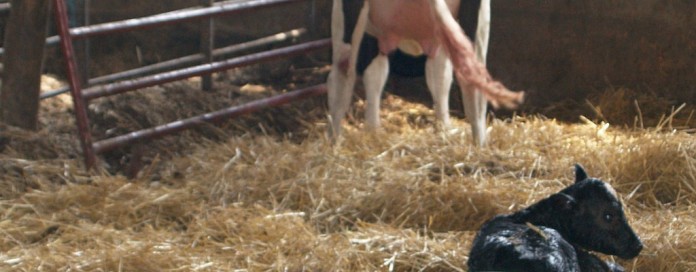A comprehensive calving management program involves many components, but one of the most important aspects for decision-making is valid and reliable records.
Dairymen, consultants, and veterinarians often troubleshoot calving-related losses within herd, but the lack of meaningful records makes it difficult to implement effective corrective measures. Keeping accurate and complete records of calving-related events is key to reducing the prevalence of stillbirth around parturition and improving calf development. In many dairy herds there are shared responsibilities for a given task, shift changes, turnover, absenteeism, and the subsequent communication challenges.
New app
I’ve developed eCalving, a touchscreen application for dairy producers and personnel to easily record and manage calving-related records in real-time. The free eCalving app is currently available for Android smart devices at www.ecalving.com within OSU Veterinary Extension.
It is important to note that the timing and accuracy of data depends on the willingness/cooperativeness of the individual recording the information. This user-friendly tool requires minimal training to use, but employees must possess knowledge and skills regarding calving and colostrum management (what to look for and why it is important). I can provide training for calving personnel upon request.
What it does
The app was designed to benefit herd-specific calving management programs by helping farms keep more accurate and complete records, and to monitor personnel adherence to established protocols and SOPs. The app captures those calving-related events associated with stillbirth and calf development.
Components of the app include:
1) Login screen for individual herds.
2) Capture of selected calving-related events for both dam and calf (e.g., parity, breed, BCS, hygiene of perineum, calving ease, sex of calf, presentation, personnel).
3) Rolling list of active cows with an alarm to monitor calving progress and time in labor.
4) Rolling list of active calves (single or multiple) within 24 hours after birth.
5) Colostrum management practices (quality, quantity, time of administration, calf vigor, birth weights, and personnel).
Does it work?
During a field study to assess the effectiveness of the eCalving app in dairy herds, calving events collected by personnel from six large dairy operations (range: 900-5,000 cows) were recorded. The app captured calving events and integrated multiple metrics with personnel performance (accounting for the effect of shift change) such as the dam (e.g., date-time of calving), colostrum (e.g., timing, quality, and quantity) and newborn calf (e.g., presentation, vigor).
The follow-up assessment with participants revealed that the app was easy to use (91.3%) and that they would like to keep using it.
These findings showed that decision-makers can monitor calving events and losses (magnitude and time) at the farm level while accounting for the effect of management.
Bigger picture
Too often, the success of calving management programs are evaluated only on the basis of calf survival, which substantially undervalues other factors contributing to superior management.
Economic losses associated with dystocia can have severe consequences in dairy herds. It is known that dystocia increases the risk for stillbirth and maternal injury, leading to increased risk for uterine disease (metritis) and reduced milk yield and reproductive performance of lactating dairy cows. Without considering medical and replacement costs, the percentage contribution of the total costs resulting from dystocic births was reported as 41% due to reduced milk yield, 33.4% due to reduced fertility, and 25% due to cow-calf losses.
Prevention of stillbirth at the herd level requires an ongoing and constant effort with effective coordination of the whole system (animals, feed/water, facilities, environment, and personnel).
Considering the diversity of production systems, adoption of herd-specific management practices is critical to prevent calving-related losses (e.g., stillbirth, dam injury, and uterine diseases) without neglecting animal welfare and profitability.
Difficult births at calving, backward presentations, calf gender (male), parity (primiparous cows), season (winter and spring), and the time around the shift change (calves born 1 hour before and after) of herd personnel have been associated with increased risk for stillbirth.
For instance, distribution of births with respect to season (daily or weekly birth rate) and the same number of calving personnel might increase the risk for stillbirth because of increased number of cows calving per unit of time and the real possibility of late intervention (unable to assist multiple cows with dystocia at the same time).
What to focus on
A proactive calving management program should cover at a minimum the following four areas:
1) nutrition and reproductive management of replacement heifers (from birth to weaning, from weaning to breeding, and from breeding to calving) and dry cows;
2) appropriate calving and colostrum protocols and SOPs;
3) efficient training and re-training of personnel;
4) calving-related records; and
5) adequate facilities.
The eCalving app addresses records, and the data collected can be used to assess the human element associated with protocols and SOPs, and training.













